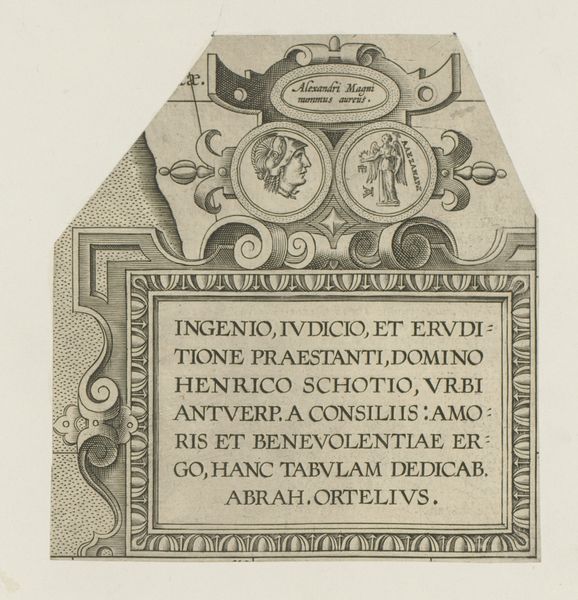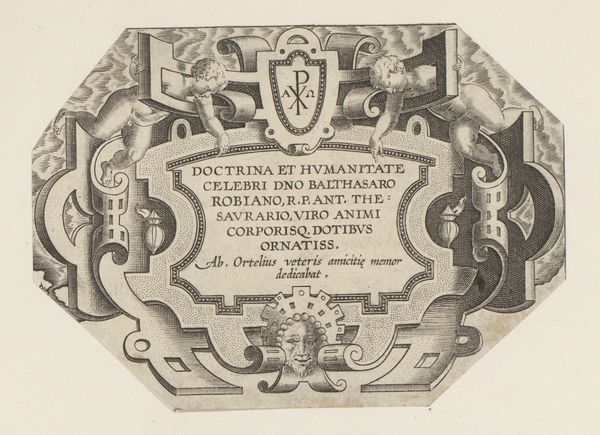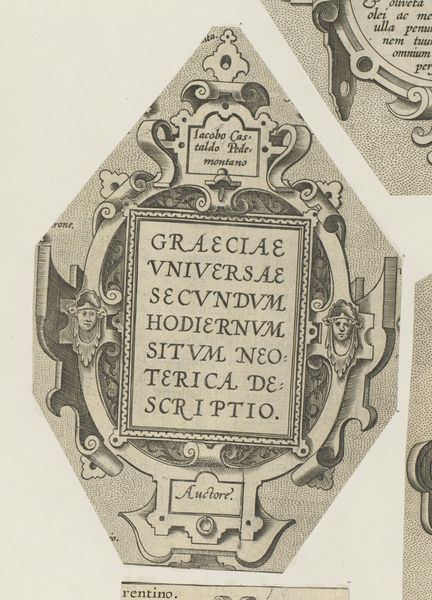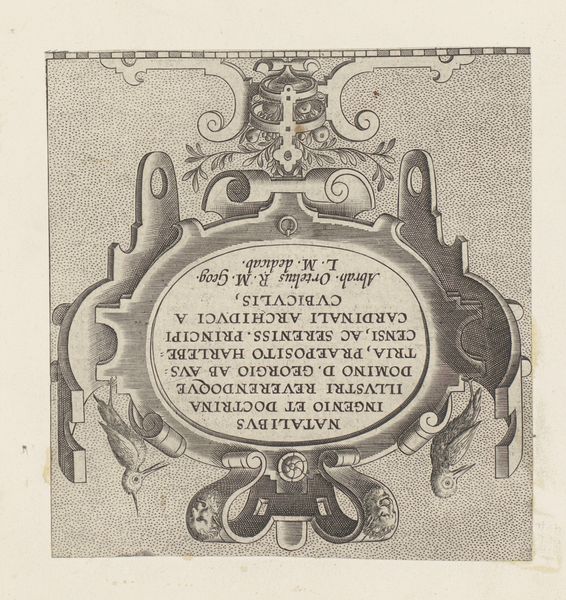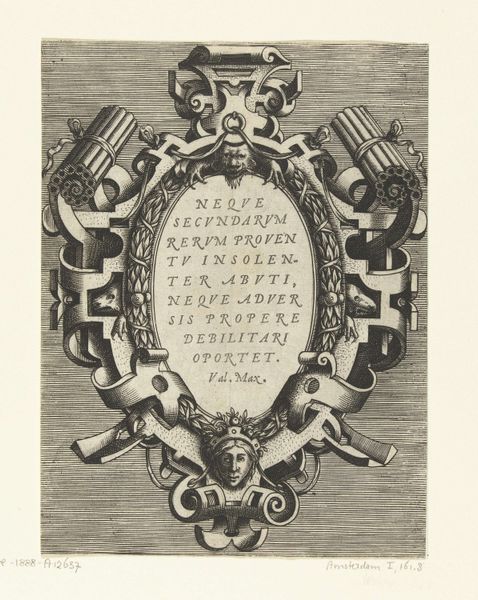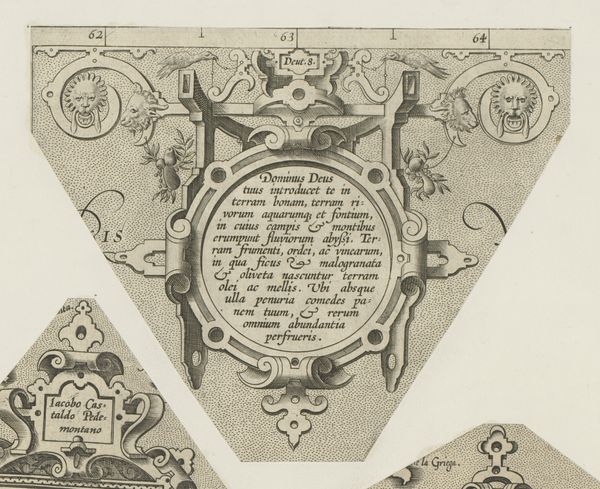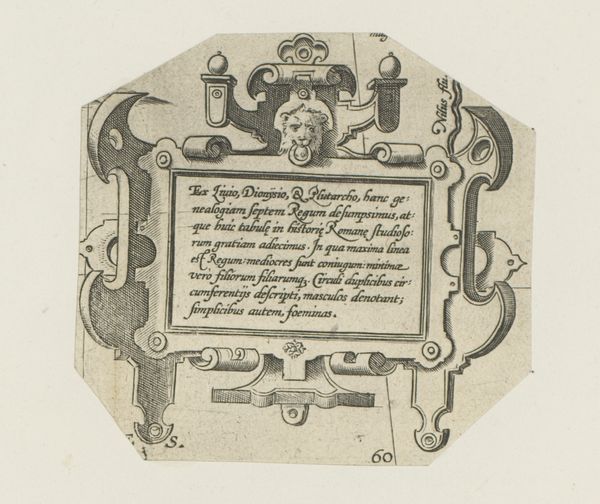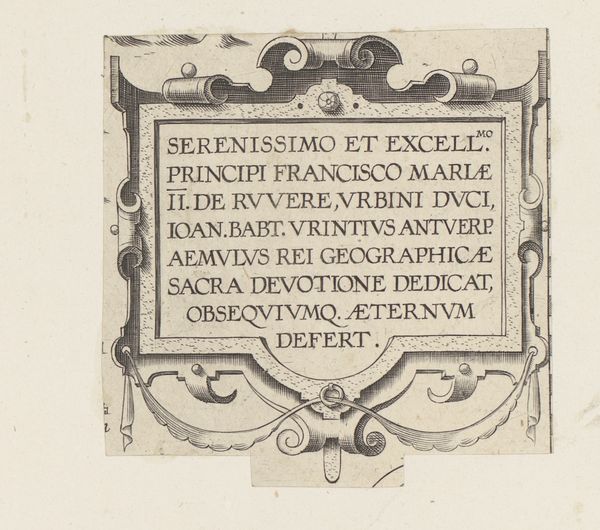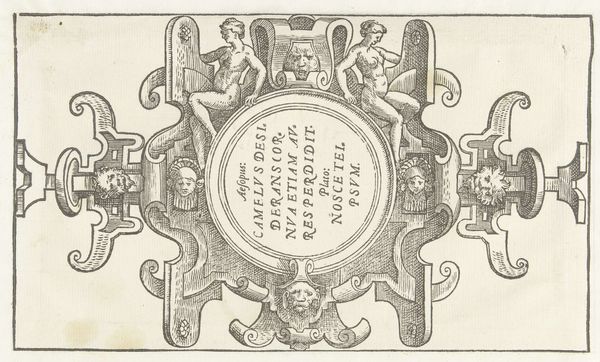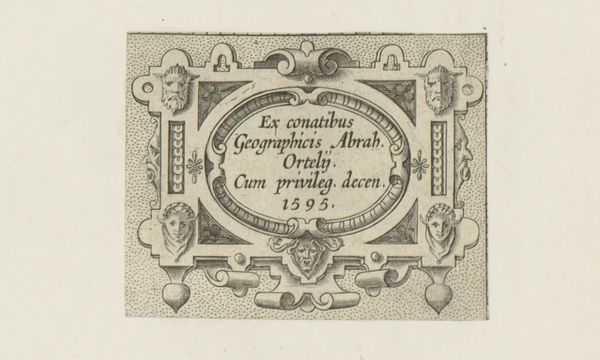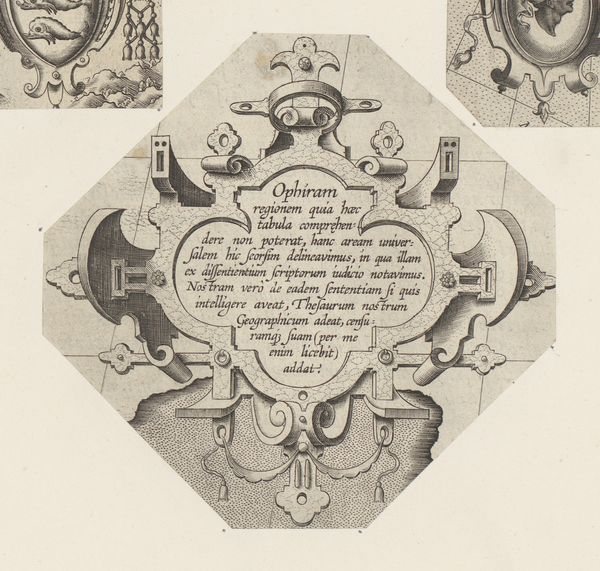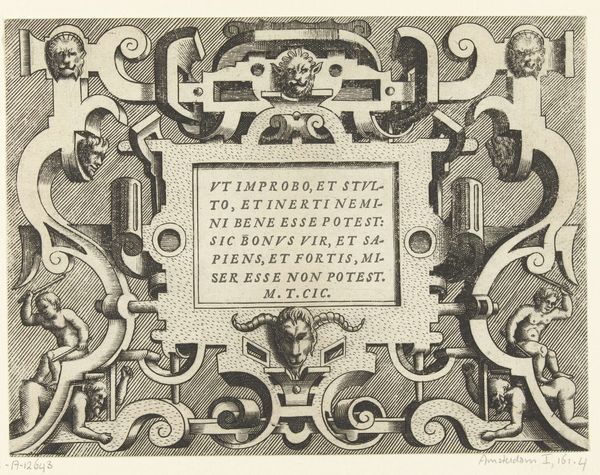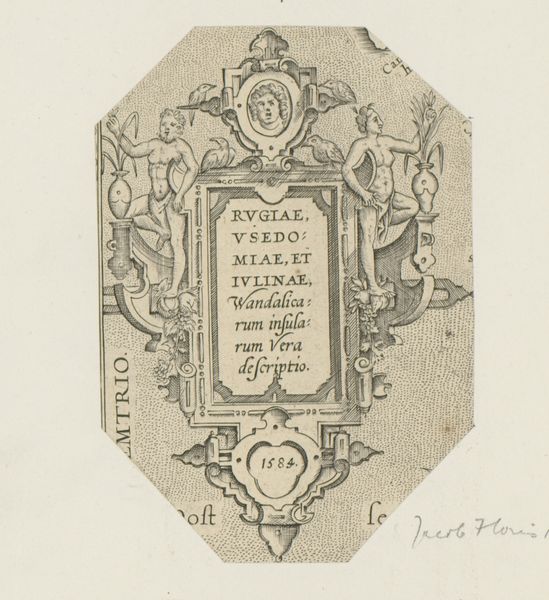
drawing, print, engraving
#
drawing
# print
#
11_renaissance
#
engraving
Dimensions: height 106 mm, width 132 mm
Copyright: Rijks Museum: Open Domain
Curator: Let’s turn our attention to this engraving, "Vierlobbig cartouche met rolwerk," dating back to 1570, currently held at the Rijksmuseum. It's attributed to an anonymous artist. Editor: It looks like a section of a map, and the engraving has this incredible rigidity, and confidence. The detail makes you feel as though you're seeing precisely how the work was made through cross hatching! Curator: Indeed. The engraving technique itself lends to that feeling of precision and control. Looking closer, this is very much Renaissance design; the symmetry, the stylized acanthus leaves curling around the central cartouche, do you see echoes of classical forms? Editor: Definitely. The cartouche, framing what appears to be an inscription, sits squarely within that tradition of presenting knowledge and authority through meticulously crafted imagery. But let’s talk about function—this wasn't purely ornamental, was it? Curator: Absolutely not. Consider how prints functioned in the Renaissance: disseminating information, mapping new territories both geographically and culturally. "Indiae Orientalis, Insularumque adiacentium typus”—a map of the East Indies and its adjacent islands, judging by that inscription. The ornamentation directs the viewer towards the cartographic details, giving precedence to territorial expansion. Editor: So, even the act of embellishment serves a concrete purpose – to amplify the power of the represented space and, by extension, its colonizers? The mapmaker turns into a crafter of soft propaganda! Curator: You put it perfectly. Visual embellishment to signal prestige or political influence – quite literally stamping ownership and creating lasting perceptions. The visual motifs and how their symbolic value adds to the context of territorial claims becomes just as important. Editor: To reflect on that idea further: this particular cartouche is anonymous, isn't it? Meaning we’re seeing a deliberate merging of labor and representation; the individual craftsmanship becomes less significant compared to the wider ambitions this artwork ultimately embodies. A means of visual and material authority made clear to the people buying it! Curator: A really sharp insight, particularly around craftsmanship obscuring an artist. That makes me look at this in a totally different way, it's definitely interesting to examine that cultural context of production here. Editor: It really puts those rolling designs into perspective. Thanks for diving into it.
Comments
No comments
Be the first to comment and join the conversation on the ultimate creative platform.
